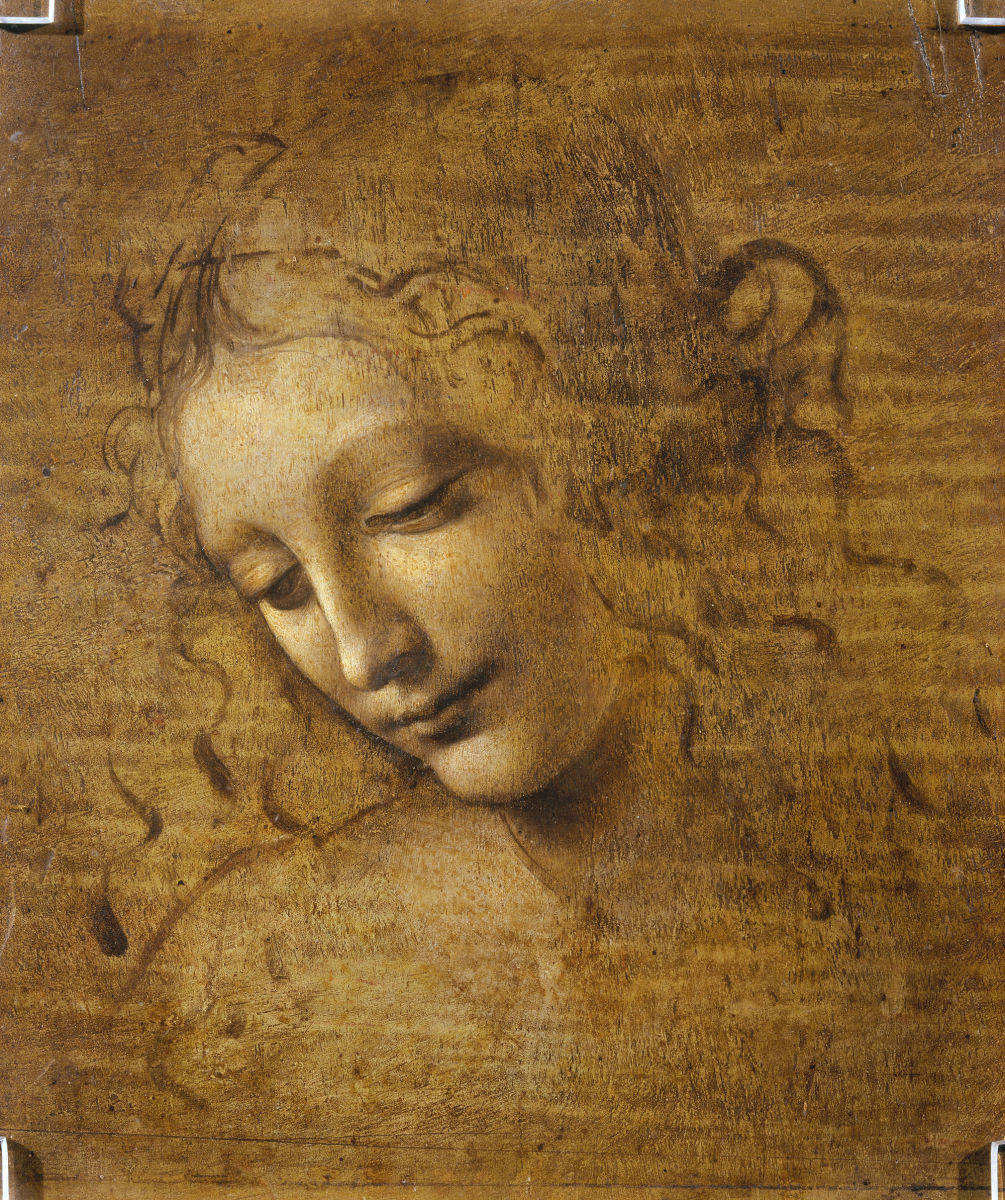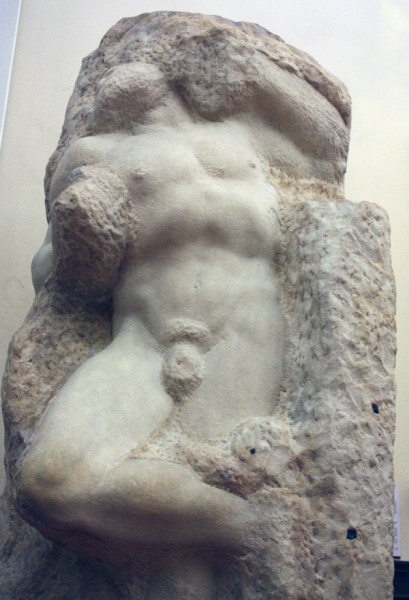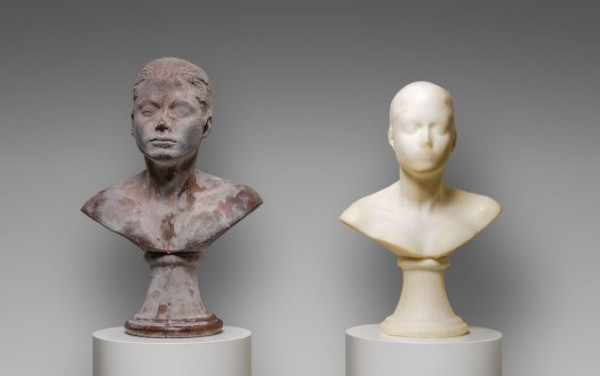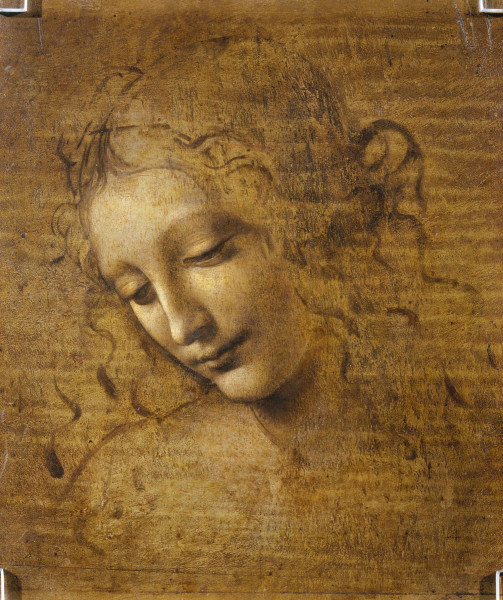
09 Apr TIO NYC: Unfinished Times Two
Work interrupted.
A life interrupted.
One show at the New Met Breuer; the other at New York’s Metropolitan Room.
Once upon awhile ago in Florence, an art historian introduced us to the concept of non finito or “unfinished” in art while in awe standing in front of Michelangelo’s Prisoners or Slaves at the Accademia.

Prisoner Awakening, Michelangelo
Named by scholars as “The Awakening Slave”,“The Young Slave”,“The Bearded Slave,” and “The Atlas (or Bound),” the masterpieces reveal Michelangelo’s unique approach to carving and his philosophy of art-making.
One of the greatest artists who ever lived (a guest lecturer at Telluride’s Ah Haa School for the Arts, Paul Evans, says he remains the greatest) was a deeply spiritual man, who believed sculptors like him were tools of God. He saw his job as not so much creating, but revealing by chipping away the excess block to free up the powerful figures imprisoned within.
According to Vasari’s chronicles, Michelangelo worked for days on end without sleep. Unlike most sculptors, who would prepare a plaster cast model, then mark up the marble to know where to chip, Michelangelo mostly worked free hand, starting from the front and working back. The Slaves or Prisoners emerged from the marble “as though surfacing from a pool of water.” ( Vasari’s “Lives of the Artists.”)
The inaugural show at the Metropolitan Museum of Art’s new Met Breuer (the former Whitney Museum) offers up variations on the theme of non finito, including a drawing by Michelangelo from the museum’s permanent collection, a vast treasure trove and the source of the blockbuster, which includes works by Titian, Tintoretto, Rembrandt, Rodin, Matisse, Picasso, Cézanne and contemporary masters.

Janine Antoni (American, born 1964) Lick and Lather, 1993. The brown was sculpted from chocolate; the white, from soap. Perishable materials mean the work unfinishes itself.
From the Met’s exhibition overview:
This exhibition addresses a subject critical to artistic practice: the question of when a work of art is finished. Beginning with the Renaissance masters, this scholarly and innovative exhibition examines the term “unfinished” in its broadest possible sense, including works left incomplete by their makers, which often give insight into the process of their creation, but also those that partake of a non finito—intentionally unfinished—aesthetic that embraces the unresolved and open-ended. Some of history’s greatest artists explored such an aesthetic, among them Titian, Rembrandt, Turner, and Cézanne.
The unfinished has been taken in entirely new directions by modern and contemporary artists, among them Janine Antoni, Lygia Clark, Jackson Pollock, and Robert Rauschenberg, who alternately blurred the distinction between making and un-making, extended the boundaries of art into both space and time, and recruited viewers to complete the objects they had begun.
Comprising 197 works dating from the Renaissance to the present—approximately forty percent of which are drawn from the Museum’s own collection, enhanced by major national and international loans—this exhibition demonstrates The Met’s unique capacity to mine its rich collection and scholarly resources to present modern and contemporary art within a deep historical context.
Is the concept of “unfinished” a theme worth exploring in great depth – or just an excuse to pull some great paintings and sculptures out of storage and provide fodder for oh-so-clever conversations at dinner parties all over New York?
Leonardo da Vinci, “Head and Shoulders of a Woman” (“La Scapigliata”) (circa 1500-1505). Photograph Courtesy Metropolitan Museum of Art
Here are a few thoughts from Holland Cotter, chief art critic for The New York Times:
The group show focuses on art that appears to have been left incomplete by its makers, and asks, if it was, Why? Unfinished is relative. Ordinarily, artists stop work when they feel they’ve done enough, even if to an observer it seems they might have kept painting. And sometimes they really do stop short. They hit a creative block, or become overbooked, or grow lazy. Or they die. In certain historical periods, for reasons of philosophy or fashion, unfinished becomes the new finished. More is just too much.
So the show has a loose, portmanteau theme, baggy and bland unless you fill it with interesting things, which the Met curators — Andrea Bayer and Kelly Baum, under the direction of Sheena Wagstaff, chairwoman of the Modern and contemporary art department — on the whole do. Chronologically, it starts on the third floor, and it feels mildly disorienting when you step off the elevator. Chances are that the last time you did this, you were faced with art by Jeff Koons, whose retrospective, ending on Oct. 19, 2014, was the Whitney Museum of American Art’s Breuer farewell. Now you’re standing in 16th-century Venice. And let’s be frank: This is a no-kidding Met power moment, with monumental pictures by three of the grandest painters of the Venetian age, meaning of any age, lined up side by side.
The smallest, a midsize Jacopo Tintoretto, “Doge Alvise Mocenigo (1507-77) Presented to the Redeemer,” illustrates the show’s theme in a literal way: It’s an oil study for some larger painting and never meant to stand on its own. Jacopo Bassano’s towering “Baptism of Christ,” with its penumbral shadows and night-light of a Holy Ghost dove, has some sketchy, not-quite-there passages. It was found in Bassano’s studio and probably in progress when he died in 1592.
Then there’s Titian’s “The Flaying of Marsyas” (1570-76) on its first trip to New York. With it, unanswerables emerge…
And while we are on the subject of unfinished…

Cabaret singer Marissa Mulder will perform Fragments of Marilyn, a unique tribute blending music from past and present with Marilyn’s own words. She returns to Telluride in August.
In her autobiography, actress and sex symbol Marilyn Monroe (1926-1962) poignantly recounts her childhood as an unwanted orphan, her early adolescence, her rise in the film industry from bit player to celebrity, and her marriage to Joe DiMaggio. In this intimate account of a very public life, she tells of her first (non-consensual) sexual experience, her romance with the Yankee Clipper, and her prescient vision of herself as “the kind of girl they found dead in the hall bedroom with an empty bottle of sleeping pills in her hand.”
Though her life was unfinished, the Marilyn in those pages is a revelation: a gifted, intelligent, vulnerable woman who was far more complex than the sex siren she portrayed public.
The Marilyn we saw on the stage of The Metropolitan Room, a hang for jazz singers, Broadway stars, comedians and drag queens at 34 West 22nd Street, was much the same: Cabernet star Marissa Mulder even has the same initials as her sometimes muse.

We met Marissa in Telluride last month thanks to Michael Estwanik of the Telluride American Songbook Concert Series, who produced her Tom Waits show at Club Red in Mountain Village, another knock-out.
As Marilyn, Marissa is, well, some like it hot.
Marissa was accompanied by her rock and gifted musical director, pianist extraordinaire Jon Weber.
Her director Sondra Lee was in the audience, hooting and applauding with the rest of the usual been-there, done-that Big Apple crowd.
Footnote: Lee, now 85, was the original Tiger Lily in Peter Pan and a girlfriend of Marlon Brando. And her life, like Marissa’s, is still not finished.

Marissa, in Performance



Sorry, the comment form is closed at this time.